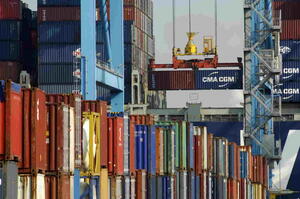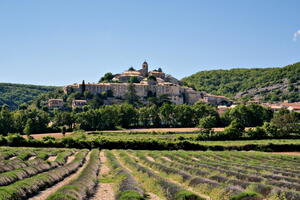Facts and figures about the PACA region
Among the hundreds of books that are published every year about Provence, "Données économiques et sociales" never makes the best-seller list. This is quite unfair: the yearly publication from the French National Institute of Statistics and the Regional Chamber of Commerce, though a bit arid, is a treasure trove of facts, ratios, maps and figures that help draw a comprehensive picture of the Provence-Alpes-Côte d'Azur (PACA) region.
The administrative region PACA, which was established in 1972, more or less covers the southeastern part of the ancient Roman Provincia Narbonensis, whose capital was the city of Narbonne. From the 9th to the 15th century, the County of Provence was partially and successively a fiefdom of the Catalan rulers of Barcelona, the Kings of Burgundy, the German rulers of the Holy Roman Empire and of the French-born Kings of Naples. Only in 1486, under King Charles VIII, was Provence legally incorporated into the French royal domain.
PACA is now composed of six départements—administrative divisions that were created during the French Revolution in 1792. One of them, the Alpes-Maritimes, was joined to France belatedly in 1860.
These six departments are very different from one another. Hautes-Alpes and Alpes-de-Haute-Provence, with respective populations of 133,000 and 155,000, are still very rural, with few industrial establishments—except in the Durance Valley—and an economy dominated by agriculture, sheep raising and tourism. Agriculture is also very strong in Vaucluse (pop. 533,000) and Bouches-du-Rhône (pop. close to 2 million), which account for more than 30 percent of all fruits and vegetables, except potatoes, that are grown in France. Var (pop. close to 1 million) and Alpes-Maritimes (pop. 1 million) are more tourism-oriented and also wealthier, at least on the littoral fringe where population and economic activity is concentrated.
PACA's industrial activity centres in Bouches-du-Rhône; this department is responsible for more than 80 percent of the region's total importations and exportations.
All together, PACA ranks n°3 among the French regions for its contribution to the Gross National Product (7 percent); Paris-Île de France (IDF) being n°1 with 28 percent and Rhône-Alpes n°2 with 9.7 percent. From an economic point of view, France is still a very centralized country.
Average income in PACA is slightly higher than the French "provincial average," not counting the Paris-IDF region, and 5 percent lower than the global national average.
The average net monthly income for a PACA resident is EUR 1,400 (compared to EUR 1,500 nationally). Managers ("cadres") typically earn twice that sum in in Bouches-du-Rhône, where wages are highest. In Hautes-Alpes and Alpes-de-Haute Provence the average monthly salary of a manager (EUR 2,600) is 15 percent lower.
On average, women's salaries are still 25 percent lower than men's, and up to 28 percent in management positions...(to be continued)
Economic and social statistics about the PACA region can be accessed in PDF format here



